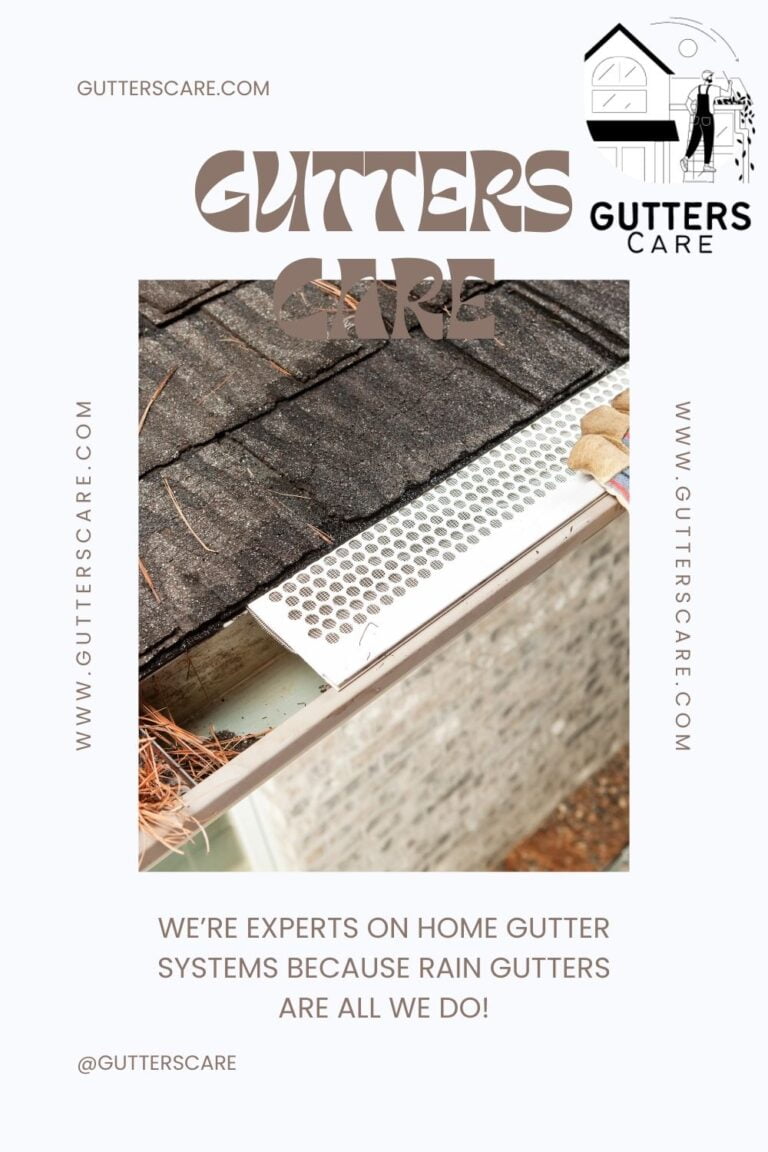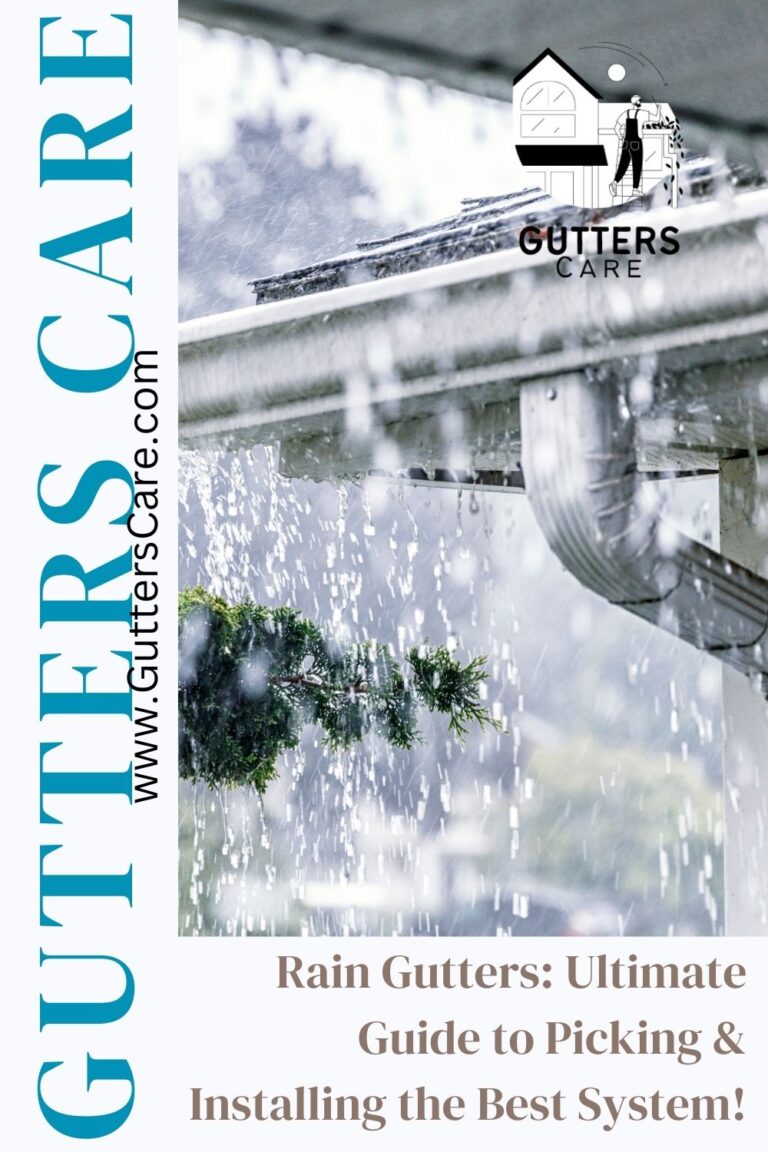Dangers of Stagnant Water in Gutters: Causes, Effects, and Solutions
Learn about the risks associated with stagnant water in gutters and discover effective solutions to prevent damage. Subscribe to the Gutters Care newsletter for expert advice.
Stagnant Water in Gutters: The Silent Threat to Your Home
When was the last time you thought about your gutters? These often overlooked components of your home’s exterior play a vital role in protecting your property from water damage. However, when gutters become clogged or improperly maintained, they can lead to a common problem – stagnant water.
In this article, we’ll explore the causes, effects, and solutions for stagnant water in gutters to help you safeguard your home from potential harm. By the end, you’ll have the knowledge and tools to ensure your gutters remain clear and functional.
Causes of Stagnant Water in Gutters
Stagnant water in gutters is often the result of various factors. Understanding these causes is crucial to preventing the issue. Let’s delve into the most common culprits:
- Clogged Debris: The primary cause of stagnant water in gutters is the accumulation of leaves, twigs, dirt, and other debris. When these materials accumulate, they create blockages that prevent water from flowing through the gutters and downspouts.
- Inadequate Slope: Gutters should have a slight slope to direct water towards the downspouts. If the gutter system is not correctly installed or has become misaligned over time, water may pool in certain sections, causing stagnation.
- Poor Gutter Design: Gutters come in various shapes and sizes, and some are more prone to stagnant water than others. Inadequate design can lead to water pooling, especially in flat or low-pitched gutters.
- Corrosion and Rust: Older gutters may develop rust and corrosion, leading to leaks and blockages that result in water stagnation.
- Freezing Temperatures: In cold climates, frozen water can obstruct gutters. Ice dams, which form at the edges of roofs, can trap water and cause it to back up into the gutters.
- Inadequate Downspouts: If your gutter system has insufficient downspouts, it may not effectively handle the volume of water during heavy rains, causing water to accumulate in the gutters.
- Neglect and Lack of Maintenance: Regular gutter maintenance is vital to keep them functioning optimally. Neglecting gutter cleaning and upkeep can lead to water stagnation.
The Impact of Stagnant Water
Stagnant water in gutters is not merely a cosmetic issue; it can have far-reaching consequences for your home’s integrity and your wallet.
Here are some of the significant effects of allowing stagnant water to persist:
- Foundation Damage: When water overflows from clogged gutters, it often lands close to the foundation of your home. Over time, this can lead to soil erosion and even cracks in the foundation, compromising the structural integrity of your property.
- Roof Damage: Stagnant water in gutters can rot your roof’s edge and fascia boards. It can also create a breeding ground for algae and moss, which can damage the roof material and shorten its lifespan.
- Siding and Paint Damage: Overflowing water can cascade down your home’s siding, potentially causing discoloration, warping, and other types of damage to your exterior surfaces.
- Basement Flooding: If water is not adequately redirected away from your home, it can seep into the basement, leading to flooding and costly water damage repairs.
- Insect Infestations: Stagnant water in gutters can become a breeding ground for mosquitoes and other insects, leading to a pest problem in and around your home.
- Mold and Mildew Growth: Moisture from stagnant water can seep into your home’s walls, leading to mold and mildew growth, which can be harmful to your health and expensive to remediate.
- Landscape Erosion: Overflowing water can erode your landscaping, wash away mulch, and create unsightly ditches in your yard.
Preventing these issues is paramount, and understanding the causes of stagnant water in gutters is the first step toward maintaining a safe and damage-free home.
Preventing Stagnant Water in Gutters
Now that you understand the causes and potential consequences of stagnant water in gutters, let’s explore how you can prevent this common issue.
- Regular Gutter Cleaning: The most effective way to prevent stagnant water in gutters is through regular cleaning. Remove leaves, twigs, and debris from your gutters at least twice a year, typically in the spring and fall. This simple practice will keep your gutters flowing freely.
- Gutter Guards: Gutter guards are protective covers or screens that can be installed over your gutters to prevent debris from entering. While they can reduce the frequency of cleaning, some maintenance may still be required, especially in heavy debris areas.
- Proper Installation: Ensure your gutters are installed correctly with the appropriate slope. Gutters should be sloped toward the downspouts, promoting efficient water flow.
- Regular Inspection: Inspect your gutters regularly to identify any signs of damage, rust, or sagging. Promptly repair or replace damaged sections to prevent water from pooling.
- Maintain Downspouts: Ensure that downspouts are clear and not obstructed. Use a hose to flush out debris and ensure water flows freely through them.
- Trim Trees and Overhanging Branches: If your property has trees overhanging the roof, trim them regularly to minimize the amount of debris that falls into the gutters.
- Heat Tape and Deicing Cables: In areas prone to ice dams, consider installing heat tape or deicing cables along the roof edge to prevent ice buildup.
- Proper Landscaping: Grade the landscape around your home to ensure that water flows away from the foundation and doesn’t pool near the house.
- Gutter Pitch Adjustment: If you have a problem with the gutter pitch, it may need to be adjusted to ensure water flows in the right direction.
- Regular Roof Inspection: Inspect your roof for any signs of damage, leaks, or missing shingles. A well-maintained roof can help prevent water from entering your gutters prematurely.
DIY Gutter Maintenance Tips
While professional assistance may be required for more complex issues, many homeowners can perform basic gutter maintenance themselves.
Here are some DIY tips to help keep your gutters in optimal condition:
- Safety First: Always use a stable ladder and have a spotter when working on a ladder. Wear appropriate safety gear, including gloves and eye protection.
- Clear Debris: Use a scoop or your hands to remove debris from the gutters. Start near the downspout and work your way along the gutter.
- Flush the Gutters: After clearing the larger debris, use a hose to flush out any remaining dirt and smaller particles. Ensure that water flows freely through the downspouts.
- Inspect Seams and Joints: Check for any leaks or gaps at seams and joints. Seal them with a gutter sealant if necessary.
- Check for Sagging: Look for areas where the gutters are sagging or pulling away from the roofline. Reattach or replace any loose hangers.
- Clean Downspouts: Use a plumber’s snake or hose to clear any clogs in the downspouts. Ensure that water flows freely down the downspout and away from your home’s foundation.
- Repair and Replace: Replace any damaged or corroded sections of the gutter as needed. If you’re not comfortable with these repairs, consult a professional.
- Trim Overhanging Branches: Regularly trim trees near your roof to minimize the amount of debris that falls into the gutters.
Professional Gutter Services
While DIY maintenance is essential for keeping your gutters in good shape, there are instances where professional services can be invaluable.
Here are some scenarios where professional assistance is recommended:
- Gutter Installation: When installing a new gutter system or replacing an existing one, it’s best to consult with a professional to ensure it’s done correctly and efficiently.
- Roof Repairs: If you suspect roof damage, it’s wise to hire a professional roofer to assess and repair any issues.
- Gutter Guards Installation: Installing gutter guards can be a complex process, and professional assistance can ensure they are correctly fitted to maximize their effectiveness.
- Heat Tape Installation: For areas prone to ice dams, it’s best to hire a professional to install heat tape or deicing cables.
- Gutter Repairs: If your gutters are sagging, leaking, or damaged, a professional can provide the necessary repairs to prevent stagnant water and further damage.
- Bi-Annual Maintenance: For those who prefer not to climb a ladder, professional gutter cleaning services can be scheduled bi-annually to keep your gutters in optimal condition.
Stagnant Water In Gutters: Overview
Stagnant water in gutters is a common issue that can lead to severe consequences for your home’s foundation, roof, siding, and more. However, by understanding the causes, effects, and prevention methods, you can take proactive steps to protect your property and save money on potential repairs.
Regular gutter maintenance and cleaning are vital, and homeowners should take advantage of DIY maintenance tips to keep their gutters in top shape. Additionally, consulting with professional gutter services when needed ensures that your gutter system functions optimally and guards against stagnant water.
Remember, the key to a safe and sound home is regular maintenance, which includes taking care of your gutters. By following the guidelines in this article, you can prevent the hassles and expenses associated with stagnant water in gutters, safeguard your home, and enjoy peace of mind.
Subscribe to Gutters Care Newsletter
For more expert advice on gutter maintenance, home protection, and valuable tips for safeguarding your property, subscribe to the Gutters Care newsletter. Stay updated on the latest insights to keep your gutters clear and your home safe. Don’t miss out—subscribe today!
Subscribe to The Gutters Care Newsletter
Don’t let stagnant water in your gutters threaten the integrity of your home. Subscribe to Gutters Care and stay informed about essential maintenance tips and solutions to keep your gutters flowing freely. Get started now!
Comparison Table: DIY vs. Professional Gutter Maintenance
In the battle against stagnant water in gutters, there are two primary approaches: DIY maintenance and professional gutter services. Each method has its pros and cons, and the choice largely depends on your comfort level, expertise, and the specific needs of your gutter system. Let’s compare these two options to help you make an informed decision.
| Criteria | DIY Gutter Maintenance | Professional Gutter Services |
| Skill Level Required | Basic to Moderate | Advanced |
| Safety Considerations | DIY can be risky if safety measures are not followed | Professionals are trained and equipped for safety |
| Cost | Generally lower cost | Can be more expensive |
| Frequency | Regular maintenance required | Typically scheduled bi-annually |
| Gutter Cleaning | Doable with the right tools and equipment | Thorough cleaning with professional-grade equipment |
| Gutter Repairs | Simple repairs may be handled, but complex issues may require professional intervention | Professional assessment and repairs |
| Gutter Installation | Not recommended for complex installations | Expert installation for optimal performance |
| Gutter Guards | Installation can be challenging | Expert installation for maximum effectiveness |
| Roof Repairs | Not equipped for roof repairs | Roof inspections and repairs, if needed |
| Heat Tape Installation | DIY installation possible but can be complex | Professional installation for reliability |
| Time Commitment | Time-consuming, especially for larger homes | Efficient, saving you time and effort |
| Warranty | No professional warranty | Often comes with a workmanship warranty |
Prevent Stagnant Water In Gutters with Routine Gutter Maintenance
In summary, both DIY and professional gutter maintenance have their advantages and disadvantages. DIY maintenance is suitable for those who are comfortable with heights, have basic to moderate skills, and are willing to invest time and effort into regular upkeep. On the other hand, professional gutter services offer convenience, expertise, and safety, making them a wise choice for those with complex gutter systems, limited time, or concerns about their safety.
Ultimately, the choice between the two depends on your preferences, budget, and the specific needs of your gutter system. A combination of both, such as DIY maintenance between professional servicing, can also be a practical approach to ensure your gutters remain free of stagnant water and potential damage.
Subscribe to The Gutters Care Newsletter
Stay informed about the latest in gutter maintenance, home protection, and valuable tips for safeguarding your property. Subscribe to Gutters Care today and make the right choices for your home’s well-being.
FAQ: Gutter Maintenance and Stagnant Water
Are you still curious about gutter maintenance and how to deal with stagnant water issues? Here, we address some frequently asked questions to provide further clarity on this important topic.





